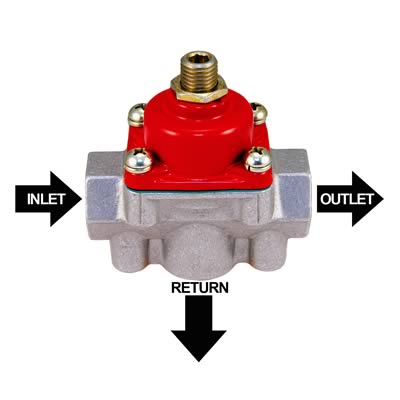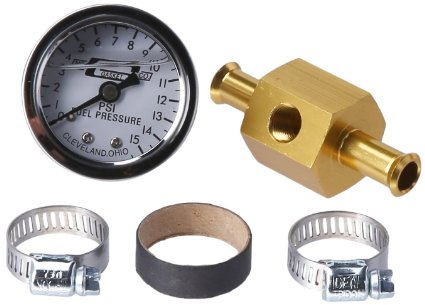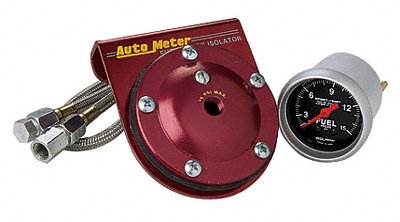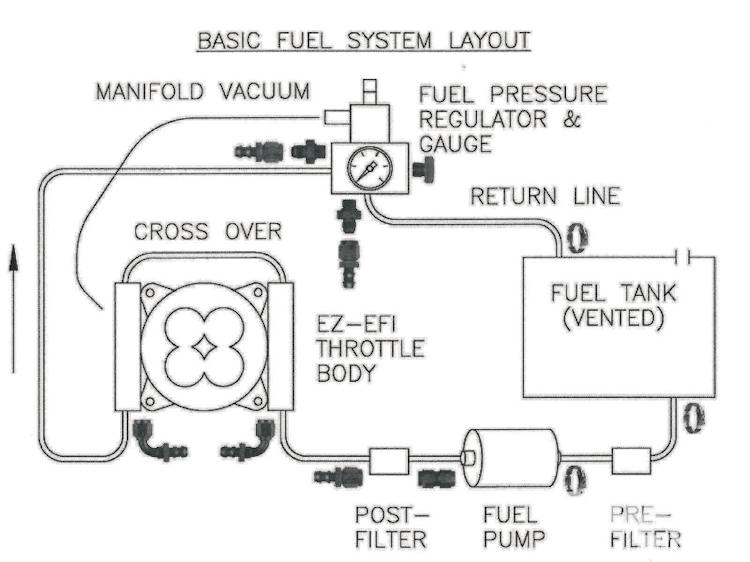Fuel Pressure Regulator
A fuel pressure regulator's task is simply to insure fuel going to the carburetor or injectors arrives at a specific pressure, not volume.
Carbureted Engine Fuel Pressure Regulator
On a normally aspirated engine with one (or multiple) carburetors fuel is stored in the fuel tank and typically pulled from the tank by the mechanical fuel pump which, in turn, delivers fuel to the carburetor(s). Factory mechanical fuel pumps supply (or at least are supposed to) an acceptable range of pressure for the carburetor designed for that engine.

Fuel Pressure Regulator

Fuel Pressure Gauge and Installation Kit

Fuel Pressure Gauge Isolator
A mechanical fuel pressure regulator is placed between the fuel pump and the carburetor(s) and should be accompanied by a fuel pressure gauge between the regulator and carburetor(s). If your particular car has a fuel return line, excess fuel not being used is sent back to the fuel tank via the return line. If your car is not equipped with a fuel return line, this orifice can be plugged. A simple fuel pressure gauge can easily be plumbed into the fuel line to see just how much pressure is actually getting to the carburetor(s). Never use a fuel pressure gauge inside the driver's compartment unless the gauge is "isolated" from the fuel supply; many aftermarket suppliers have different styles of regulators, gauges (analog and digital), and isolators. For most applications a 0-15 pound range gauge is sufficient. A quality fuel filter is typically plumbed between the fuel pump and the regulator.
Fuel Injected Engine Fuel Pressure Regulator
Electronic fuel injection runs at a much higher fuel pressure than a normally aspirated carburetor and requires a higher range fuel pressure regulator and associated gauge.

This is a typical aftermarket electronic fuel injection setup. Often the electric fuel pump is located inside the fuel tank with its own filter. A good inline fuel filter is still a very good idea to plumb between the fuel tank and the fuel injection unit on the engine with a quality fuel pressure gauge after the filter. Since electronic fuel injection operates at a much higher fuel pressure, a 0-100 pound gauge is required here.

 Home
Home Decode
Decode Tech
Tech Tools
Tools Dale's Coins/CDs
Dale's Coins/CDs Contact
Contact Chevelle
of the Month
Chevelle
of the Month Things
For Sale
Things
For Sale Custom
Stickers
Custom
Stickers